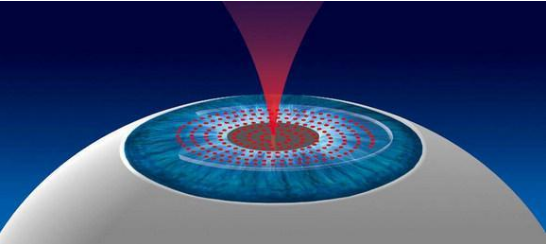As an important organ for the human body to perceive the outside world, the importance of eyes is beyond doubt. Nowadays, the birth of many electronic products, and people's long-term lack of sufficient sunlight, has led to a growing population of myopia. Many people therefore consider using surgery to correct their myopia. Although the development of myopia surgery has been around for some time, the risks inherent in it still discourage many people.
Principles of visual formationToday, a new technology is quietly developing. Recently, the top international journal "Nature-Photonics" (Nature Photonics) published such a news, Columbia University scientists Sinisa Vukelic and Chao Wang proposed a method based on the principle of photochemistry, which can be corrected without surgery The vision of myopic patients.

The reason why we can see the object is that the light reflected by the object passes through the cornea and pupil, then refracted by the lens, passes through the vitreous body, then converges on our retina, and finally processed by the brain, which finally forms our vision.
There are two reasons for the occurrence of myopia. One is that the cornea is no longer smooth and becomes steep, so the light reflected by the object has coincided before reaching the retina, and the projection on the retina is scattered, so the sight is blurred. Not clear. The other is that the eye axis of the eyeball becomes larger, which is equivalent to pushing the projector away from near, and the image projected on the retina is also blurred. So someone invented eyeglasses and used the lens to make the light accurately gather on the retina. But some people want to be able to do it forever, or simply don't like to wear glasses, so surgery has become another option for these people.
Treatment of myopiaCurrently, the most commonly used treatment for myopia is refractive surgery. It can quickly and effectively restore patients to their own myopia, but because this operation is an invasive surgery, there are still some factors of instability. In some cases, patients have suffered permanent blindness after undergoing surgery.
In addition, there are laser operations, such as excimer laser in situ keratomileusis (LASIK) and excimer keratectomy (PRK), which use laser to ablate the cornea to achieve a thinner cornea, thereby improving the patient’s Myopia, but such surgery also makes the cornea more vulnerable.
If the patient's cornea is very thin, or there are other factors such as dry eye, then the above methods are not suitable. So at this time, myopia correction without surgery will become the gospel of these people. There is no need to cut off the excess cornea, nor to vaporize the cornea with the laser, and directly use the femtosecond oscillator to change the structure of the cornea.
Myopia treatment without surgerySinisa Vukelic and Chao Wang said that the femtosecond oscillator (1 femtosecond = 10-15 seconds) can produce lasers with extremely low energy and extremely high oscillation frequency. Using these lasers can selectively change the mythology and biomechanics of corneal tissue. The structure, the irradiated cornea area, the water molecules inside it will ionize to generate active oxygen clusters, which react with collagen in the cornea to form new chemical bonds or chemical cross-links.

This method is to modify the visual acuity by changing the macroscopic geometric characteristics of the corneal tissue, and these lasers are not enough to destroy the tissue in the treatment area. Therefore, patients may not need surgery, and the side effects and limitations of this treatment are relatively small.
As for patients with thin cornea, dry eye, or other eye diseases, myopia can be corrected under this method of treatment. And this technology is expected to treat eye diseases including myopia, hyperopia, and astigmatism.
The gospel of myopic patientsSince people are exposed to the sun for less time, according to the World Health Organization, as of 2017, China has a population of about 450 million myopia, of which 10 million have developed pathological myopia. The incidence of myopia in children continues to rise with age. Among them, 6 to 10 years are the key age group. The incidence of myopia in first grade is about 3.9%, while that of junior high school students is as high as 67.3%.
It is estimated that by 2020, about 2.5 billion people worldwide will suffer from myopia. By 2050, nearly half of the world’s people will be myopic, and in 2000, the proportion of myopic people was only 1/4.
Such a huge population of myopia, a considerable proportion of which is not suitable for myopia surgery. The technology will plan to start clinical trials at the end of 2018. At the same time, they are also looking for a method to predict the mechanical behavior of the cornea through a function of laser radiation, irradiating the laser on a small circular area of ​​the cornea, and calculating the function How to transform, by then, they can launch a more personalized treatment plan.
Sinisa Vukelic said that this technology can be applied not only to eye treatment, but also to other keratin-rich tissues, such as the treatment of osteoarthritis, and the current experimental results are very good. This proves that this non-invasive therapy has extraordinary potential and will also benefit patients suffering from keratinous tissue diseases.
Guangzhou Yunge Tianhong Electronic Technology Co., Ltd , https://www.e-cigarettesfactory.com